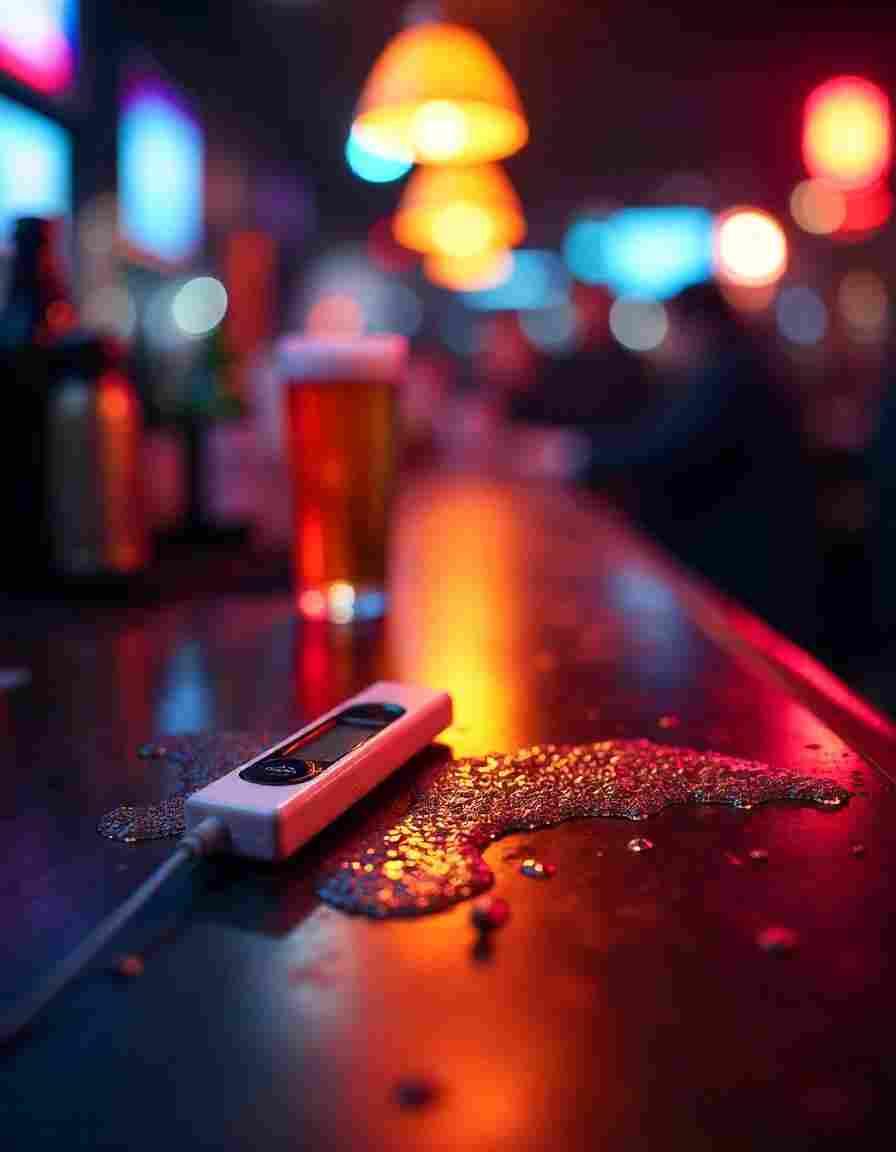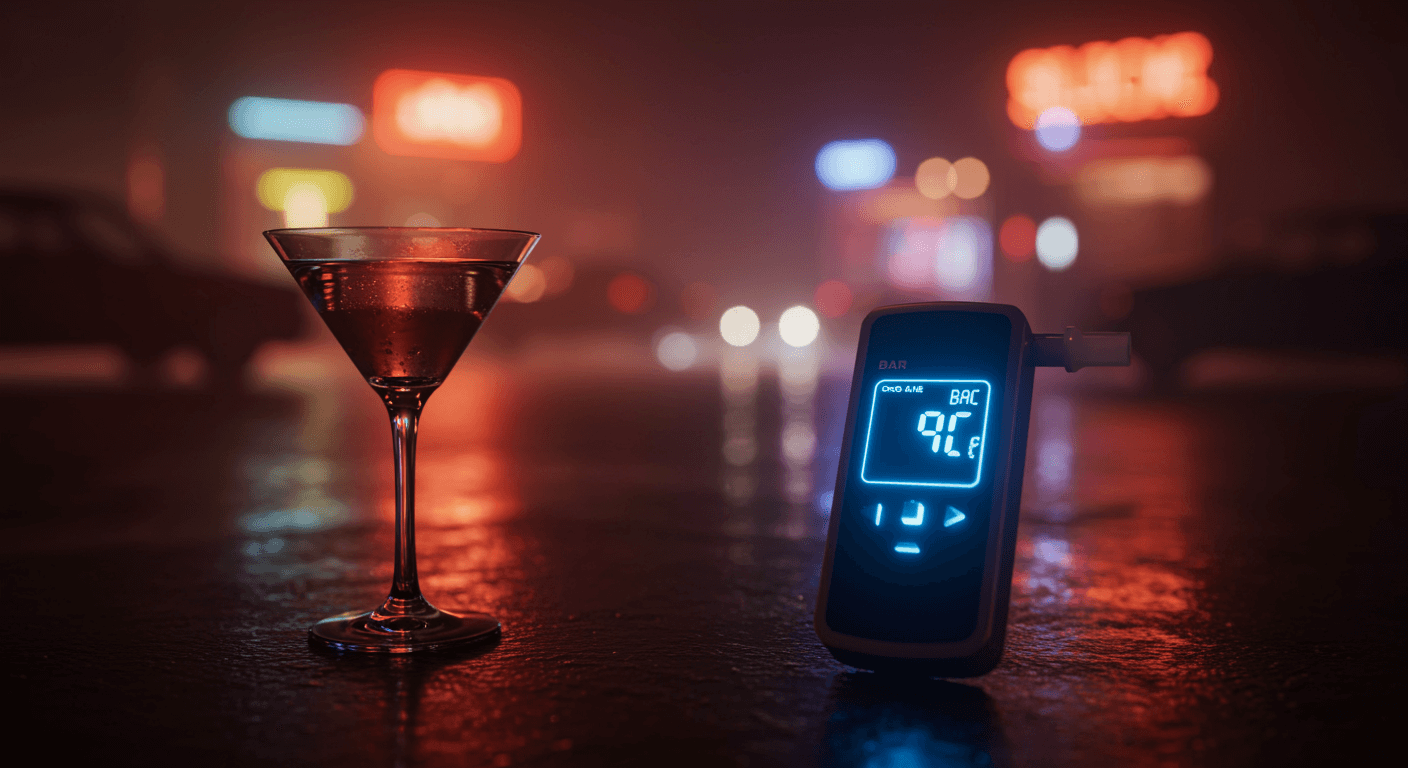You’re hanging out with friends, your first beer is already half gone, and suddenly you wonder: “Will I even be able to drive later?” That’s exactly when a blood alcohol chart comes in handy. It gives you a rough idea of what your body is doing with the alcohol—no lectures, just a bit of common sense.
What does promille actually mean?
Promille indicates how much alcohol is present in your blood. More precisely, it shows how many milliliters of pure alcohol are found in one liter of blood. It sounds technical, but it’s crucial when it comes to driving. Even small amounts can significantly slow your reaction time and concentration. Often, this happens before you even notice it yourself.
This much alcohol is (approximately) in you
Of course, every body reacts differently. What barely has any effects on one person can throw someone else off balance. However, a table can be quite helpful for orientation. Here are some reference values based on body weight:
Example for men
For a body weight of 70 kg:
- 0.3 liters of beer (5 %) → approx. 0.26 ‰
- 0.5 liters of beer → approx. 0.44 ‰
- 0.2 liters of wine (12 %) → approx. 0.48 ‰
- 4 cl of spirits (40 %) → approx. 0.44 ‰
For a body weight of 80 kg:
- 0.3 liters of beer (5 %) → approx. 0.23 ‰
- 0.5 liters of beer → approx. 0.40 ‰
- 0.2 liters of wine (12 %) → approx. 0.43 ‰
- 4 cl of spirits (40 %) → approx. 0.39 ‰
For a body weight of 90 kg:
- 0.3 liters of beer (5 %) → approx. 0.20 ‰
- 0.5 liters of beer → approx. 0.35 ‰
- 0.2 liters of wine (12 %) → approx. 0.38 ‰
- 4 cl of spirits (40 %) → approx. 0.34 ‰

And what about women?
Women often reach higher levels with the same amount—simply because their bodies are composed differently. Less water, a different enzyme system. As a rule of thumb: Blood alcohol levels are usually 10 to 20 percent higher than in men of the same weight.

When does it get dangerous and expensive?
In Germany, the rule is: If you're driving, you need to know exactly what's going on. The regulations are clear—and quite strict:
- Under 21 or still in your probationary period? Then the rule is: not a single drop.
- From 0.3‰, things can get tricky if you show any unusual behavior.
- From 0.5‰, it gets serious—fines, penalty points, and a driving ban.
- And from 1.1‰, that's officially the limit—this is considered absolute unfitness to drive.
How quickly does the body break down alcohol?
Not as fast as you might like. On average, about 0.1 to 0.15 per mille per hour—that’s roughly the equivalent of a small beer every two to three hours. If you partied hard in the evening, you won’t automatically be sober again in the morning. And this residual alcohol is especially tricky—because it feels so harmless.

Promille-Rechner
Frequently Asked Questions about Alcohol and Blood Alcohol Content
This depends on your body weight, gender, and how quickly you drink. Roughly speaking: A 0.5l beer results in about 0.4‰ for an 80 kg man. But be careful: Even 0.3‰ can be dangerous—especially when driving.
On average, about 0.1 to 0.15 per mille per hour. This means that if you have a blood alcohol level of 1.0 per mille, it will take at least 7–10 hours before you are completely sober again. By the way, coffee, a cold shower, or exercise won't help – your body simply needs time.
For new drivers and those under 21, the limit is 0.0‰. For everyone else, the limit is 0.5‰. However, you can already get into trouble starting at 0.3‰ if you behave conspicuously—for example, if you swerve or are involved in an accident.
Women generally have less body water and a different metabolism. As a result, alcohol is distributed less throughout the body, causing blood alcohol levels to rise more quickly. Even at the same weight, the effects can therefore be significantly stronger.
This can get really expensive: €500 fine, two points in Flensburg, and one-month driving ban—and that's just the beginning. Depending on your blood alcohol level and the situation, you might also have to undergo a medical-psychological assessment (MPU).
Honestly: Most of the time, no. Your own sense of your body can be misleading—especially with alcohol. If you “feel sober,” you often aren’t yet. If you want to be sure, use a measuring device or just leave the car parked.


